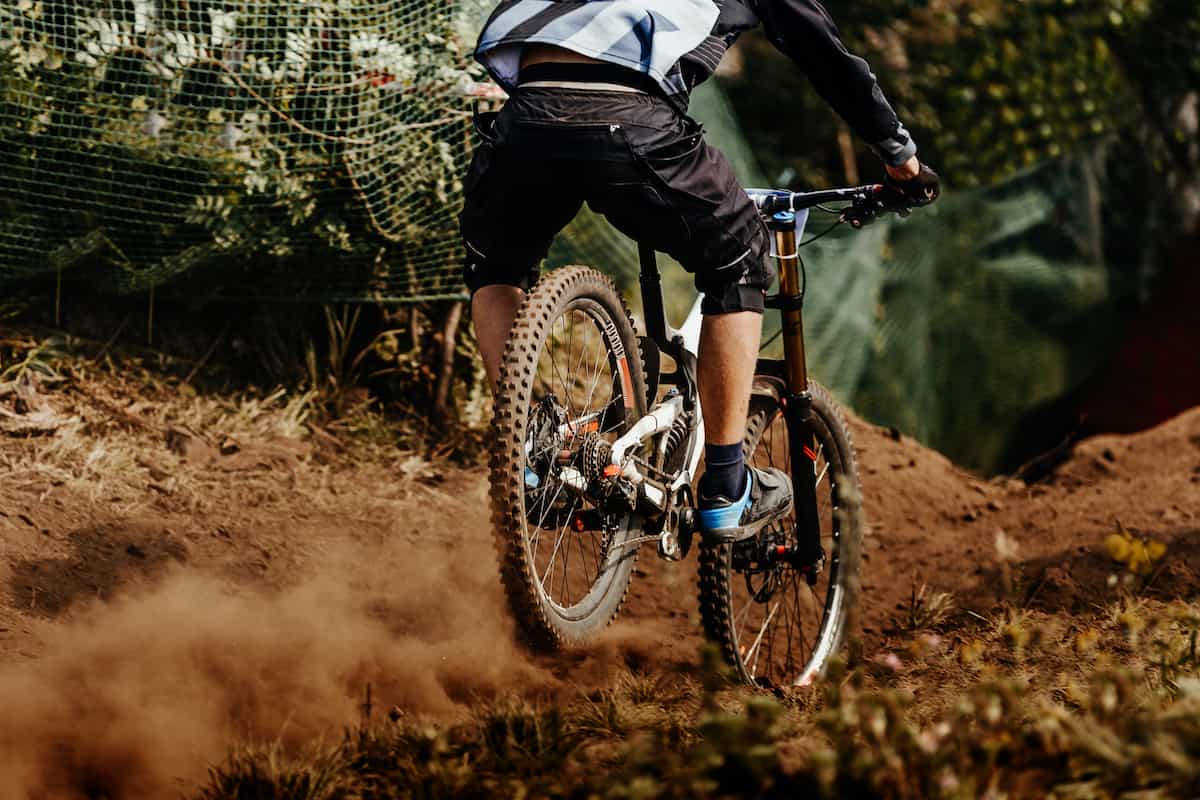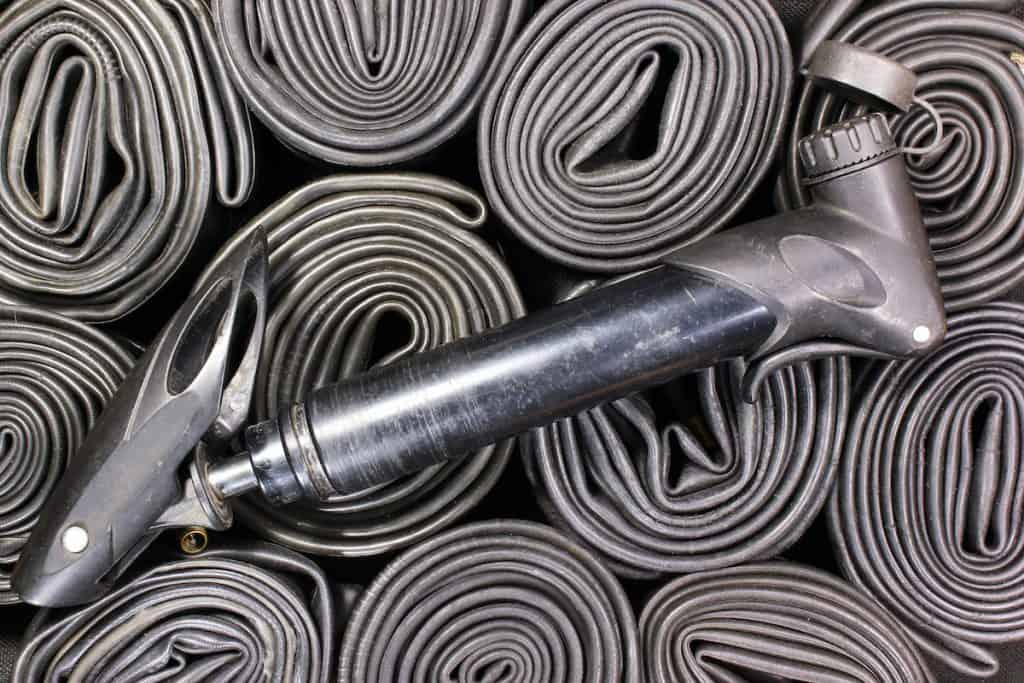
Ever thought about going tubeless on your mountain bike but wondered what the pros and cons were? Well, we are going to go into detail about what the advantages are, and why you might want to.
A tubeless tire setup provides many distinct advantages for mountain bikers including a smoother ride, better traction, reduced weight, and fewer punctures.
So, if going tubeless gives you certain advantages, you might want to know more about what disadvantages there might be and how to go about it. Stay tuned and read more on this topic below.
Difference Between Tube and Tubeless Bike Tires

There are a few things that differentiate tubed and tubeless tires from one another, and these make them good for different things.
So, here are the main differences between the two options!
Tubed Tires
Although most products offer simpler options as the first option, that is not true for tires. This option has two pieces instead of one, unlike the tubeless setup.
This means that the outside tire is made from one type of rubber, but the tube in the inside of the tire is made from another type of rubber and is a separate piece. This is done because the outside rubber has to be durable enough to endure hours of riding at a time.
However, the inside tube must be soft enough for the tube to be fitted into the tire during installation. They also have a cross-section that is the same as the one in tubeless tires, but they have the tube inside the tire that doesn’t allow for running on lower tire pressure.
Tubeless Tires
A tubeless tire has no inner tube like the tubed options, which allows for a separate chamber to be made for holding the air in the tire. The tubeless build also lets you have an airtight tire that is more durable than the tubed options.
Having a tubeless tire means that there is no separate inner tube, but this tire comes with the same kind of cross-section as the tubed versions. In order to have a tubeless tire, you will need the bead of the tire to lock directly onto the tire’s rim.
If you don’t have this, then the tubeless tire will not work. However, with this locking bead, you can run on lower air pressure than the tubed tires can.
Advantages and Disadvantages

With each of these two types of tires, there are advantages and disadvantages that you must think about before deciding to opt to go tubeless on your mountain bike.
Each tire option is better for certain things, but not for others, and knowing the differences will help you know which option is the best for you.
So, let’s take a look at the advantages of the tubed and tubeless tire options to see what they are best used for.
Tubeless Tires
When it comes to the advantages of tubeless tires, the list is pretty long.
But we will go over all of them to show you all of the reasons you might want to opt for tubeless tires for your mountain bike.
Advantages
The first advantage of having tubeless tires is that they come with the ability to run at lower tire pressures. This might seem like an unusual advantage, but this will allow your tires to have more of a grip on the trail.
This can help prevent the uneven ground from lifting the tire off the terrain and can also make for a much more comfortable ride overall.
Tubeless tires are also more durable when it comes to getting a flat tire. These options tend to be more resistant to flat tires because of the lower tire pressure that will keep the tire more flexible.
This flexibility can help save your tire from sharp objects because the tire pressure will not push the rubber toward the object and will instead allow for some movement to keep the tire from getting punctured.
Also, if you do happen to get a flat, your tire is not as likely to completely separate from the rim. This keeps the tire in better shape and keeps you from needing to put it back in place!
Without the need for a tube, tubeless setups tend to run a little bit lighter than tubed ones. While the weight difference is minimal, it is worth pointing out as one area for potential weight savings if that’s of importance to you.
Disadvantages
However, though there are many advantages to having a tubeless tire, there are still a few disadvantages to consider before deciding to switch over.
First and foremost, running a tubeless setup requires that you have tubeless compatible rims and tires to ensure a good seal. Rims traditionally have holes that allow the spokes to travel through, however, this can be remediated with rim tape.
This extra step isn’t hard, but does ensure a close eye to ensure a good seal is made.
The other alternative is to simply purchase a new set of rims and tires that are already tubeless compatible. However, if you’re looking to cut costs this may not be an option.
In addition to the rim and tire specificity, there will also be the need to purchase tire sealant to ensure a good seal. While it’s not expensive, it is one more thing to take into consideration.
One fantastic option that you should consider is Stans NoTubes Tire Sealant. This premium sealant is widely used and performs extremely well in a variety of conditions.
Pro Tip: In addition to the sealant, you can make your life a LOT easier by also grabbing a valve core remover. This allows you to seat the tire on the rim, and then remove the valve core so that the sealant can be pumped straight into the tire.
Compared to filling up the tire with sealant and then trying to finagle the tire onto the rim without spilling the sealant this is a huge win! Unless you’re a pro at getting tires on and off, the core remover will pay for itself in unspilled sealant 😉
The other disadvantage that should be noted is that although you will have a lower chance of getting a flat tire when you do, it can be tougher to fix it when you are out on the trail. This can take a good amount of time and be harder to do than with a tubed tire.
Aside from carrying a basic patch kit to help deal with these smaller punctures, you’ll also still want to carry a backup tube for bad blowouts. You can also read my full article on patching tubeless tires as well.
Having to walk your bike while potentially many miles away from your vehicle or home is never a run way to end a ride!
Tubed Tires
With these advantages and disadvantages in mind for a tubeless setup, let’s take a look at tubed tires. After all, tubed tires have been around for a long time, and for good reason!
Advantages
When talking about tubed tires, one of the main advantages is that they are lighter than tubeless options. This makes it easy to change and ride with because no added weight will make you have to work harder.
For newer riders, this can be a great thing because they will get tired easily. But with lightweight tires, they will not have that issue since they will likely be able to handle the weight well.
And, although tubed tires are more susceptible to getting a flat tire, they are easy to fix and don’t take much effort to be able to do it. This makes it simple to change or fix a flat tire while mountain biking on a trail.
Disadvantages
One of the biggest disadvantages of having tubed tires is that they are much more susceptible to getting a flat. Because the rubber on the outer part of the wheel is made from harder rubber, this makes it more likely to get punctured by a sharp object in the road because it is not as flexible.
Another disadvantage is that the tubed tires are not able to run at a lower tire pressure like the tubeless tires. This makes you have a lessened grip on the road and doesn’t offer as much traction when you need it.
Also, if you happen to get a flat tire on the road, you will find that these tubed tires will often separate from the rim more often. This can be a hassle to deal with, especially when on the side of the road or a hiking trail.
Are Tubeless Mountain Bike Tires Better?
Well, the answer to this will depend on what you are looking for in a mountain bike and how experienced you are.
If you are more advanced and able to deal with the extra weight and tough tire fix when the tire is flat, then the tubeless option will be better for you.
However, if you are newer to mountain biking and do not feel that you will be able to handle a tubeless conversion or want to fiddle with patch kits and sealant, then stick to tubed tires.
Tips for Converting MTB Wheels to Tubeless
When you are attempting to convert MTB wheels to tubeless, you will need to keep in mind these tips to ensure that it is done correctly.
- Make sure to get rim tape if your rims are not already tubeless-ready
- Have a plastic tire lever on hand to make the process of getting the tire on and off easier
- Do NOT attempt to do a conversion with a hand pump! Use a good floor pump at a minimum.
- Use a good sealant to ensure optimum tire performance on the trail
- Valve core removers are the best cheap item you can purchase. Don’t think about this – just get one now and thank me later!
Conclusion
If you have been thinking about making the switch from a tubed tire to tubeless on your mountain bike, you want to know what the advantages of both and what the caveats are.
With the information that we have given you in this article, you can choose the best option for you based on your experience and what you think you can handle.
For those who are all right with fixing tire issues while on the road, you will not find the tubeless options intimidating, but some might.
So, choose the best option for your experience level and see how well your tubed or tubeless tires will work for your bike riding adventures.
If you’re looking for an in-depth guide that explains everything about mountain bike tires, then make sure to take a look at my dedicated article here.
